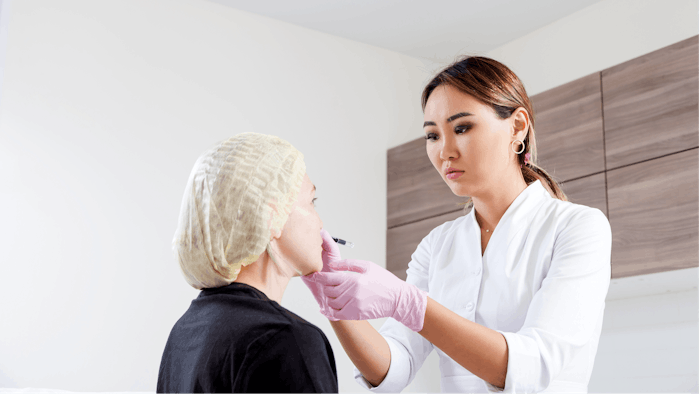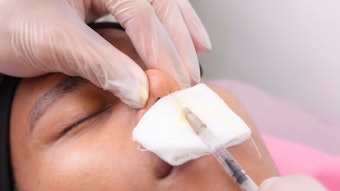
Botulinum toxin injections in the masseter muscle can lead to complications, including injection site pain, localized swelling, bruising, headache, chewing weakness and aching. To help injectors achieve safe and effective outcomes, aesthetic providers Zhi Yang Ng, MBChB, MRCS; and Tiffiny Yang, MBBS, GDFM, shared their technique for masseter muscle botulinum toxin injections in the Aesthetics Surgery Journal (July 5, 2021).
Related: A Review of Botulinum Toxins for Platysmal Bands
Senior author Yang, has been using the technique since 2010. Zhi Yang Ng, a resident with the Oxford School of Surgery, department of plastic surgery, successfully used the same technique to treat 55 patients between October 2019 and July 2020. The technique is as follows:
Prior to injection, the physicians applies Eutectic Mixture Local Anesthetics (EMLA) cream (AstraZeneca) bilaterally to the lower masseter area, near the angle of the mandible, for 30 minutes.
Patients are then asked to clench and hold their teeth to enable the anterior border (Line A) and most prominent bulge (X) of the masseter to be marked. (They are allowed to relax after.) Depending on individual anatomy, a second line is then drawn from either the tragus (Line B) or the inferior border of the ear lobe (Line B’) to the corner of the mouth, with the aim of capturing the majority of the masseter bulk within these two lines to minimize the risk of diffusion into the zygomaticus complex.
Related: Longer-lasting Botulinum Toxin Injections
A cold pack is applied over the most prominent point followed by injection perpendicularly with a 30G needle in a 1 cc syringe until the mandible is felt. At this point, the needle is withdrawn slightly and a third of the botulinum toxin is deposited. The needle is then re-orientated without withdrawal from the skin and advanced slightly for the next two deposits, usually anteriorly and superiorly; this is then repeated for the other side.
The authors note that pain and bruising are rare and, occasionally, some patients report mild discomfort, but this is otherwise self-limiting and resolves within a few days.
Repeat procedures are then performed, usually at the patient’s request at four to six monthly intervals.











